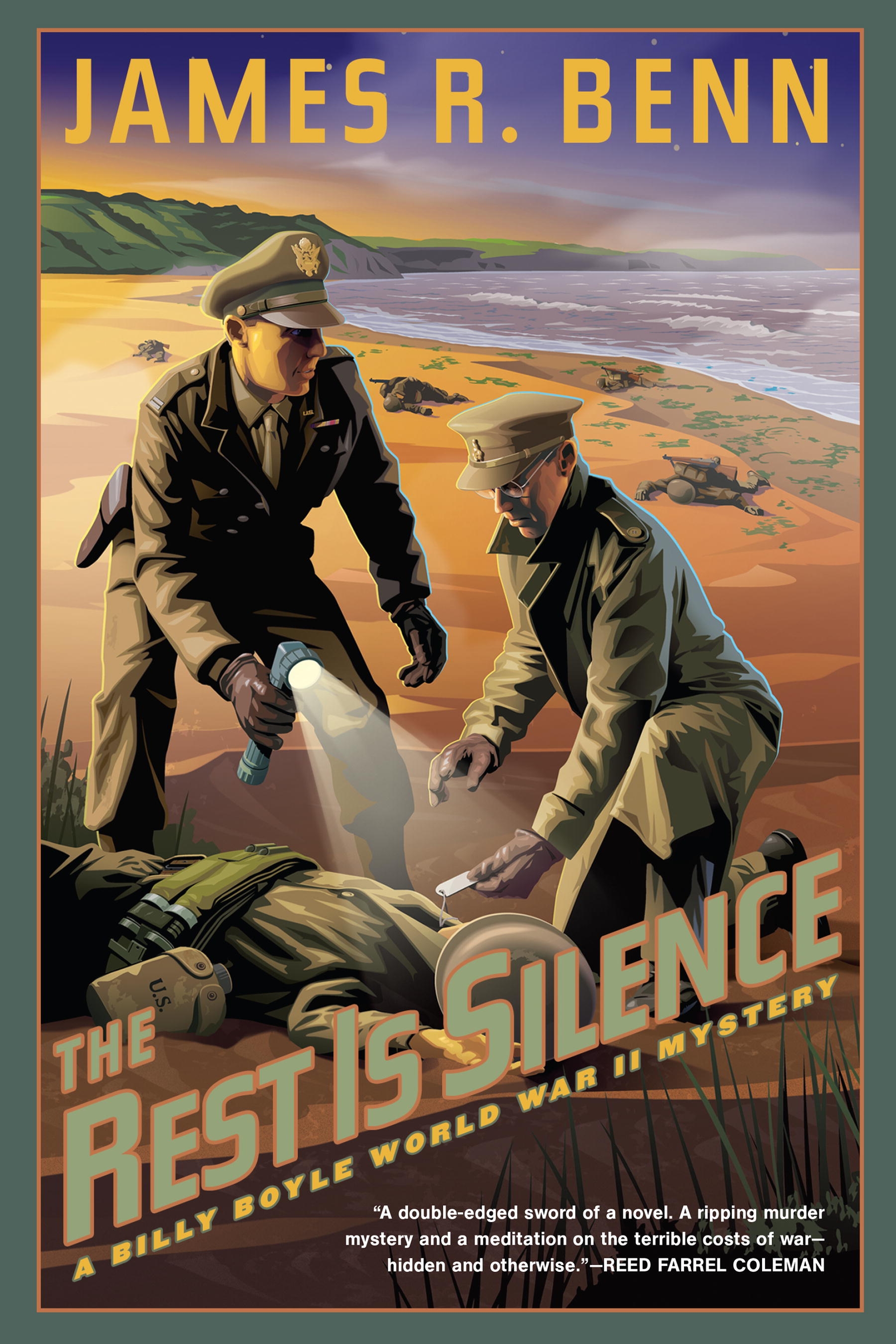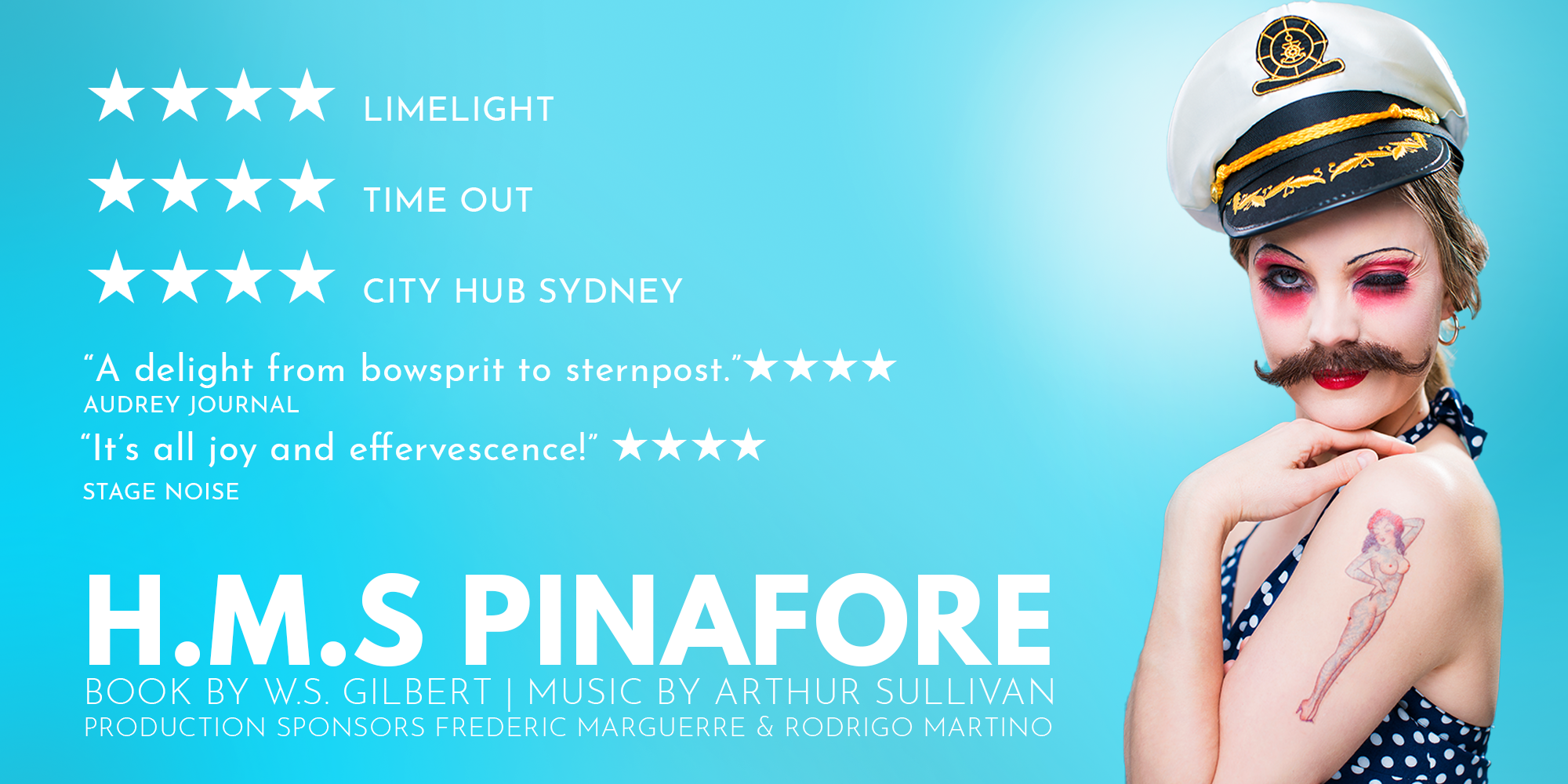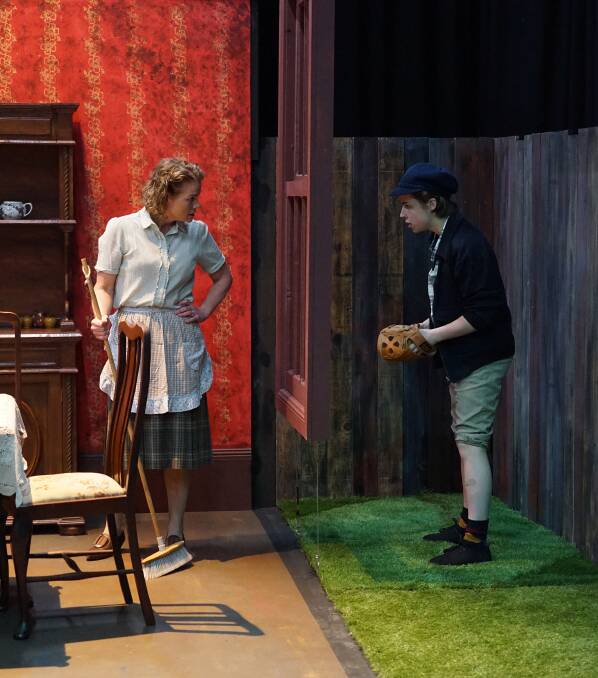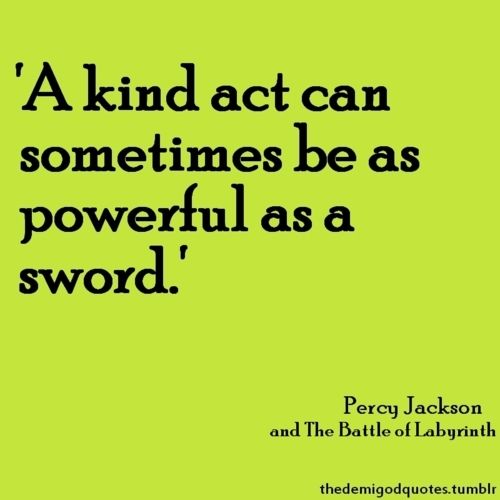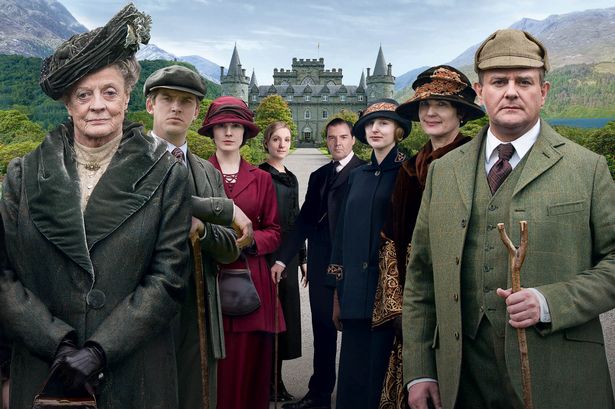Friday, 25 December 2020
Friday Five: Who's Who on Christmas Day
Tuesday, 22 December 2020
Boys' Own War Adventure: The Rest is Silence
The writing on the jacket claims
that this is “a Billy Boyle World War II Mystery”, so it is obviously one of a
series in which US Army Captain Billy Boyle and his partner Kaz work for the Office
of Special Investigations: “our job was to deal with low crimes in high places
that got in the way of the war effort. And to deal with them quietly, although
quiet wasn’t always in the cards.” The novel was published in 2014, but the
style is that of a previous era with a hard-boiled-detective noir fiction bent.
When a body washes up on Slapton
Sands on England’s Southern Coast, Boyle and Kaz are called in to investigate. The
Devonshire Beach is the home to Operation Tiger (April 1944), the top-secret
rehearsal for the approaching D-Day invasion of Normandy. This was a real event
in which hundreds of Allied soldiers lost their lives; there were more American
casualties in the exercise than the actual attack.
While the men are investigating
the crime, they are billeted in a country house full of rich people, which
includes a dead patriarch, old animosities, and a contested will. This provides
ample sub-plots about relationship dynamics. One of the family members, Edgar, is
writing a book about the interpretation of the end of Hamlet, which is where the title of the novel originates. Boyle
seems to be taking a swipe at academia and philosophy, whereas he deals in hard
truths and manly facts.
He is a plastic Paddy American
who hates the English as part of his shtick, having to restrain himself from
voicing his true feelings. Boyle is related to General Dwight Eisenhower, who is
everyone’s boss in the US Army: “I call him Uncle Ike”. Lady Pemberton, the
matriarch of the house in which he is staying says, “One bristles at the idea
of a foreigner, even one of our American cousins, telling the British army what
to do. But he seems like a decent fellow.” Boyle is naturally tough and
uncompromising and rejects authority figures, or certainly British ones. War is
unpleasant, requiring a stern exterior, and Boyle narrates his part in a stoical
fashion. He takes no prisoners and favours neither side, trying to remain natural
about the situation.
In some cases the language
strains to be contemporary to the setting. There are men with physical
deformities including Kaz: “[Kaz] grinned, his scarred face looking slightly
maniacal. I don’t much mind maniacal when it’s on my side.” And there are men
with mental scars as a result of the war, who have suicidal tendencies and difficulty
readjusting to civilian life. These issues may be well-known now but were less
so at the time, making the recognition anachronistic though the sentiment is
sound.
Much of the novel reads like a boys’ own adventure with comrades in arms, smugglers, gun fights, and bureaucratic conversations about military exercises and clandestine operations. Its main interest is in the fact that it is set around a genuine historic incident. There are many others in this series (fifteen at present count), so people are clearly drawn to this style of storytelling with a historical mystery set against a military background with a cynical world-weary hero.
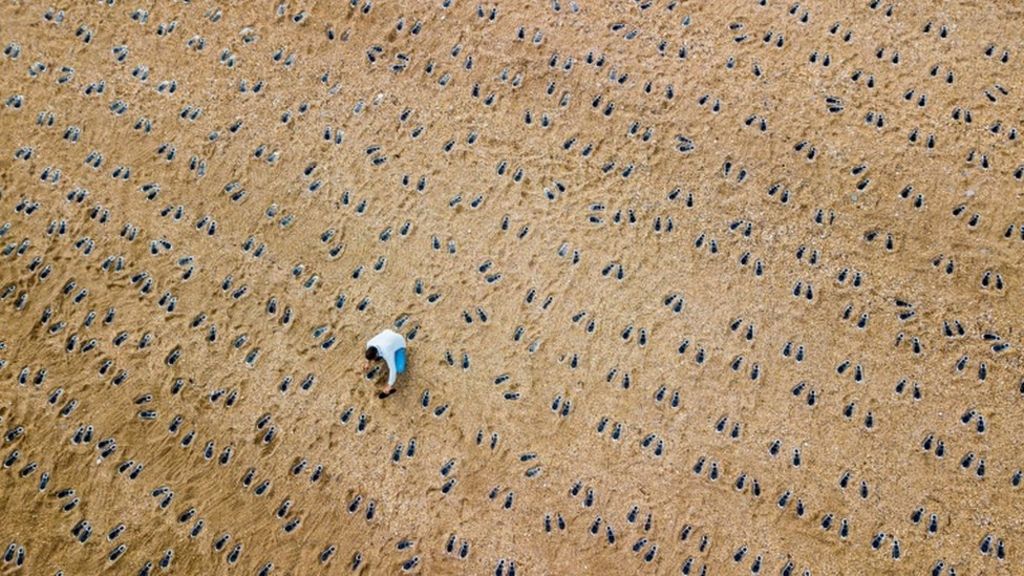 |
| Bootprints of 749 troops were laid out on Slapton Sands, Devon, in April 2019 to mark the 75th anniversary of Exercise Tiger. |
Friday, 18 December 2020
Friday Five: Best Theatre of 2020
- American Song - Red Stitch Actors' Theatre and Critical Stages Touring, Queanbeyan Performing Arts Centre: One man theatre performed by Joe Petruzzi, directed by Tom Healey, and written by Joanna Murray-Smith is a heart-felt and sensitive account of how to cope with unfathomable loss due to gun violence. It's not as preachy as it could easily be, and the dry-stone wall metaphor may be a little stretched, but it is so well-meant that I'll let it stand.
- Brighton Beach Memoirs - Canberra Repertory Society, Theatre 3: If I'm honest I'm a bit bored with stories about men being men or becoming men. I know this is not the fault of the writer (write what you know. right?) but rather the publishing houses and production companies who choose these stories over anything else. But the second rule of reviewing is 'review what is there; not what you want to be there' (the first is 'don't give away the plot'), and in that vein, this is a pretty fine production. Director Karen Vickery has obviously worked on diction and projection - despite the assumed American accents, I can still understand 90% of what the cast are saying - and has also imported a realism of action that works well with the home-spun tale of how a kid became a writer. The semi-autobiographical character of Eugene Jerome is played with plenty of energy and promise by Jamie Boyd, who looks to have a bright future if theatre survives in this town, and, as his mother, Victoria Dixon is dignified and powerful with an exceptional touch of insecurity. The family dynamics with their alliances, splits, and hierarchical divisions (three adults, three children and one teenager are crammed into a Brooklyn apartment) are highlighted brilliantly by Chris Baldock's set, which paints its own claustrophobic pictures.
- Family Values - Griffin Theatre Company, The Playhouse: Full of meaty goodness - political satire in its natural habitat with plenty of energy and dysfunctional dynamics. As he prepares for his 70th birthday, retired judge, Roger (Andrew McFarlane) holds forth smugly on a number of issues, including refugees, detention centres and boat people, in such a way that will obviously be challenged when his family arrive and question all of his assumptions. Great work by creative cast and crew brings this aphoristic text (David Williamson) to life.
- Hell Ship - Chester Creative, Queanbeyan Performing Arts Centre: Another one-man show (more likely due to financial considerations rather than viral ones) as Michael Veitch interprets a personal story about the doctor on board the 'fever ship', Ticonderoga, which arrived in Melbourne in 1852, and on which 170 of the 800 passengers (mainly Scottish families who had embarked seeking a new life) died from typhus. The doctor, James William Henry Veitch was Veitch's great-great grandfather, and he portrays his initial warmth, humour and subsequent survivor's guilt with the help of a sheet and some creative lighting.
- HMS Pinafore - Hayes Theatre Co, Queanbeyan Performing Arts Centre: This show is amazing! Kate Gaul has directed a masterpiece with respect and irreverence in equal measure. I suspected I would like it, but I was not expecting to love this as much as I do: I simply can't stop smiling. The star-crossed lovers; the mismatched marriages; the mistaken identities; the entirely relevant gender-reversals; the songs I didn't even know I knew; the hyper-realism of set and costume... Oh joy, oh rapture unforeseen; it is absolutely beautiful and an utter delight. In case you can't tell, I f*•^ing loved it.
Monday, 14 December 2020
There is no Planet B: The Battle of the Labyrinth
In this fourth instalment in the Percy Jackson and the Olympians series,
Percy and his companions embark on quest through the Labyrinth, a terrifying
place created by Daedalus, which exists in another dimension. Like its
predecessors, the novel is an entertaining introduction to the world of Greek
mythology, featuring gods, heroes, monsters, half-bloods and mortals There are
great action scene set pieces, and an underpinning ecological message that keeps
the pace varied and adds a touch of depth to the adventures.
We meet many gods, who mostly
fight each other: the Olympians are in perpetual conflict with the Titans, ruled
by Kronos who is gathering his forces in secret. The gods with their games and their
prophecies are fickle and deceptive. Thy are omnipotent, yet they fight against
the heroes and half-bloods with their magical assistants. For example, Quitus
has a large and terrifying hellhound called Mrs O’Leary who can kill and chews
on a life-size squeaky pink rubber yak. There are magical swords, invisibility
caps, and charmed whistles, but we learn that humans’ knowledge can help as
much as (if not more than) magic.
In a gameshow sequence Annabeth has to answer the sphinx’s riddle: she thinks she knows it (the one about the ages of man), but it has been changed because everyone knows that one by now. “Canned applause blasted from the ceiling, as if there were invisible loud speakers. Spotlights swept across the room and reflected off the dais, throwing disco glitter over the skeletons on the floor.” The pop-culture meets horror story aesthetic is very similar to a Stephen King novel.
The satirical style is maintained throughout to counteract the hyperbolic escapades, and Riordan makes great use of the deadpan approach (pun intended), such as when he introduces the idea of Grover searching for Pan, god of the wild. It is Grover’s mission to find Pan, and if he fails, his life means nothing. “I’d never heard him sound so confident about anything, except maybe that cheese enchiladas were better than chicken enchiladas.” Pan’s wilderness is being destroyed by humans and development. Gods can’t die, but they can fade, as Pan tells Grover, “when everything they stood for is gone. When they cease to have power, and their sacred places disappear. The wild is so small now, so shattered, that no god can save it. My realm is gone.”
The remaining humans must work together for salvation. The name, Pan, originally meant rustic, but over the years it has come to mean all. “The spirit of the wild must pass to all of you now. You must tell each one you meet: if you would find Pan, take up Pan’s spirit. Remake the wild, a little at a time, each in your own corner of the world. You cannot wait for anyone else, even a god, to do that for you.” The environmental message is strong, suggesting that life (both of people and the planet) is fragile and that we should take more care of it. Hephaestus bemoans, “People are more difficult to work with than machines. And when you break a person, he can’t be fixed.”
Percy Jackson was hailed as the
new Harry Potter, and there are many similarities with J.K. Rowling’s wizard
world. Percy is different; he has ADHD, which means he can’t sit still and he
blurts things out – perhaps this is also an excuse for antisocial behaviour? His
dreams threaten to torment him, as did Harry’s. He goes to camp every summer,
fights to protect his friends, starts having human hormones, learns to accept
difference, and deals with monsters and magic that ‘normal’ humans can’t see.
Camp Half-Blood is very dangerous and people die there; each year there is a
quest, and everyone wants one so that they can prove themselves. Rachel asks
Percy, not unreasonably, “So you do this every summer? Fight monsters? Save the
world? Don’t you ever get to do just, you know, normal stuff?”
Friday, 11 December 2020
Friday Five: Christmas Tree Ornaments
- A football - of course
- A fantail - given to us by The Weevil and a reminder of New Zealand
- A tui - a gift from another Kiwi friend
- A magpie - we've also got a couple of doves nestling among the branches - I love to see birds in the trees
- A rocking horse - my mother decided this one was for me - you can tell because she wrote my name on it
- A collage Christmas tree on a Christmas tree - very post modern from Nephew Aidan
- Pom poms - as you do (if you're Niece Niamh)
Friday, 4 December 2020
Friday Five: Stitching and Bitching
 |
| No borders unless they're pretty and floral |
"This pattern is dedicated to people fleeing persecution who, despite all obstacles still strive to create a clean, tidy, safe space for their loved ones to rest before facing another day.The women who sew together rags for their wee ones 'cause they know how important it is for a two-year-old to have a cuddly friend. The women who dress in black and march for peace amid gunfire and tear gas. All the while carrying giant handbags with keys and snacks and hankies for small runny noses."
 |
| C'mon gang: Be excellent to each other |
"Stop for a moment and imagine what the world would be like if everyone did one simple act of kindness for a stranger, every single day."Old ladies would get safely across roads, lost wallets would be returned to their owners, wars would stop breaking out all over the place. the possibilities are truly endless. Pay it forward people, I think we're onto something here!"Fucking kindness. It just works every time."
The remaining images are little kits by Thomas Joseph that I picked up back in the UK, where we like cheap gags and sheep. Well, wouldn't ewe?
Wednesday, 2 December 2020
On Shifting Sands: Celestial Bodies
Originally titled Sayyidat al-Qamar (Ladies of the Moon), Celestial Bodies is the third of Alharthi’s novels, but the first novel by an Omani woman to be translated into English and the first novel in Arabic to be awarded the Man Booker International Prize (which Alharthi shared with her translator, the Oxford academic Marilyn Booth in 2019). It spans several generations, from the final decades of the 19th century to the early years of the new millennium, and captures the changing mores and traditions in society, particularly in how they relate to women.
The family tree
at the beginning of the book is crucial, and even with constant reference to
it, the timelines can be a little hard to follow. The novel focusses on three
sisters and their marriage prospects. Mayya marries Abdallah as she is told to after
a heartbreak; Asma marries Khalid out of a sense of duty; Khawla rejects all
offers while waiting for her beloved, who has immigrated to Canada. It is
narrated by an omniscient narrator (who knows all about the women) and
alternate chapters (in a different font) by Abdallah (who doesn’t).
Abdallah’s
chapters are narrated as he is on a flight from Muscat to Frankfurt and he
dreams fretfully of women accused of witchcraft and of the source of his father’s
wealth back in his hometown of al-Awafi. Now little more than an oasis for
nostalgia, it was once a hub for the slave trade, a practice that was not outlawed
in Oman until 1970. It is no accident that the named narrator is not grounded
as Alharthi inhabits the liminal space between memory and forgetting; the truth
and the stories.
Marriage and
childbirth are centre stage: customs are followed or disregarded and everyone
has an opinion about how to follow them or not. Asma reads all the books
and religious texts that she should, including On Matters of Purity although she finds the chapters so boring that
she stops, but not before she gently mocks the highly restrictive guidelines on
personal matters. Customs which are only followed for form are ridiculed,
whereas those that come from logic and reason are upheld. It is still a
patriarchal society, but there are social benefits to marriage. “Now she would be
one of the women who sat around their coffee in the late mornings and then
again at the end of the day. She would be invited to lunch and dinner, and she
would issue her own invitations, since she was no longer merely a girl.
Marriage was her identity document, her passport to a world wider than home.”
Women must still
strive for individual recognition. When Mayya has her first child, it is a
girl, which is considered lucky as it means that boys will follow. “The first
one’s a girl, and a girl comes to raise her little brothers.” She calls her London,
which name the family ridicule, but Mayya wants to give her a future elsewhere
in the world.
The changes are occurring slowly, and the generations have different ideas and ideals. The novel is short and contains vignettes of multiple characters, such as Bedouin businesswomen, slave owners, gossips, poets and arms dealers. Celestial Bodies leaves an ethereal impression of vibrant sketches rather a chronological saga, and it provides a new and appealing voice. In a land of shifting sands, Jokha Alharthi is a shaping energy.
 |
| Jokha Alharthi and Marilyn Booth share the Man Booker International Prize for writing and translating Celestial Bodies |
Friday, 27 November 2020
Friday Five: Inveraray Castle
- The building itself - Although there has been a castle on the shores of Loch Fyne since the 1400s, the present Inveraray Castle wasn't built until the late eighteenth century (the entire village of Inveraray was moved in the 1770s to give the castle a more secluded setting). Inspired by a sketch by Vanbrugh, the architect of Blenheim Palace and Castle Howard, it is baroque, Palladian and gothic in style, and was architecturally ahead of its time. There is a difference between a castle and a palace mainly that a castle is built for defence (with thick walls, heavy gates, high towers, parapets or slits in the walls, gatehouses, moats and the like) and a palace is just for showing off. I'm not sure if Inveraray ever had to go all defensive, but it has got a moat.
- Family home - Inveraray Castle is the ancestral home of the Dukes of Argyll and the seat of the Clan Campbell. In the picture turret, there is information about the history of the Campbells' once the most powerful clan in the Highlands. There are pictures of the present Duke as Marquess of Lorne, his wedding to Eleanor Cadbury (yes, of the chocolate empire), and their son Archie, the present Marquess of Lorne. There are two other children as well and they all live here, although presumably not in the part of the house that is open to the public. It can't be pleasant having a load of commoners traipse through your house gawping at your things, but the upkeep on these places can't be cheap either.
- Highest ceilings - The dramatic armoury hall soars to 21 metres in height - the highest ceiling in Scotland. The central ceiling displays the impressive family crest, and on the ceilings on either side are the crests for the various cadet branches of the Campbells. The armoury itself displays a spectacular collection of arms, including more than 1.300 pikes, swords, muskets and other weapons. Displayed in elaborate patterns adorning the walls are 16th and 17th century pole arms and roundels of Brown Bess muskets dating from around 1740, with spandrels of muskets alternated with Lochaber axes. The latter and 18th century Scottish broadswords date from the time of Queen Victoria's first visit to Inveraray in 1847. The showcases contain pieces of relevance to the Campbell Clan and their historic connection with Britain. A highlight of the collection is the dirk and sporran belonging to Rob Roy MacGregor (1671 - 1743).
- Antique Spanish Silver Neff - In the elaborate dining room, there is a gorgeously ornate model silver sailing boat on the dining table. The neff (originally spelled 'nef') is an ornamental model ship made specially for the dinner table. They are usually quite elaborate with masts, sails, rigging and various figures on board. Early examples (13th - 16th century) were drinking vessels (do you see what I did there?) or receptacles for dining implements. Nefs originated from the continent and were used in France, Germany, Spain and Italy, but most nefs found today were made in Germany at the end of the nineteenth century. Traditionally the dining table nef was made in two sections and the top half was removable so that the hollow hull could be used to contain the spoon, knife, napkins and spices of the host. When the use of great dining halls waned, the hull was fashioned to hold wine, sweetmeats or a variety of special condiments.
- Artwork - There is amazing artwork throughout the house, from the displays of Campbell family portraits through history to the lavishly painted interiors. There is art by Thomas Gainsborough, John Hoppner, and French artists Girard and Guinard, whose only work survives at Inveraray, in the painting of the walls and ceilings, which is of a quality unparalleled in Britain at the time. Girard was one of the principle decorative artists employed by the young Prince of Wales when decorating his grand residence, Carlton House.
- Furnishings - the tapestries, furniture, and chandeliers are all remarkable and opulent. The dining table, by Gillow of Lancaster, dates from about 1800, the outstanding ormolu-mounted sideboards are from the late 18th century, and the Waterford chandeliers (of which there is one large one in the dining room and a smaller pair in the drawing room) are circa 1830. The glorious Tapestry Room still retains the original set of Beauvais tapestries in the setting specifically designed for it. The delicate tapestry dining chairs with gilding by Dupasquier and original Beauvais tapestry upholstery were commissioned by the 5th Duke on one of his visits to France in the 1780s.
- Hidden Room - There's a fabulous concealed door from the Tapestry Drawing Room that leads to the China Turret. The entrance is ingeniously concealed by a pair of double doors covered with tapestry panels integrated into the design on the Tapestry Room. This used to be a library and while it now houses a very fine collection of Oriental and European porcelain (including Japanese Imari-ware, of the early 18th century, a Meissen dessert service, and a large Derby dinner service from the early 19th century), I feel sad that it is no longer a secret place for hiding away and reading. It is presided over by a portrait of the 3rd Duke of Argyll in the robes of Lord Justice-General of Scotland by Allan Ramsay.
- Lerner & Loewe - In the Salon is a grand piano on which Lerner and Loewe composed the songs for the musical My Fair Lady while they were staying as guests at the castle. Since the early 1780's the main displays of Campbell family portraits have been arranged here, and it is possible to follow the family through history starting with a portrait of the 1st Duke and going right up to the Marquess of Lorne. The family famously switched their allegiance from Charles II to Oliver Cromwell and, then at the restoration, back to the monarchy.
- Wedding Dress - The North West Hall contains a collection of costumes worn by the family through history to the present day. The display includes the Coronation robes of HRH Princess Louise, the robes of the Knight of the Thistle and the present Duke's uniform of the Royal Company of Archers. A more recent addition is the stunning cream gown designed by Bruce Oldfield and worn by the current Duchess at her wedding to the 13th Duke in June 2002.
- Spooky Stories - The ghostly bed in this room is elaborately carved and belonged to the MacArthurs of Loch Awe. Legend has it that a young Irish harpist was murdered by the Duke of Montrose's men in 1644. The bed was moved to the present castle from the old Inveraray Castle and the boy's ghost was so attached to the bed it travelled with it. When a member of the family is about to die, it is said that harp music is heard coming from the room. Other resident ghosts are said to include the 'grey lady', only seen by daughters of a Duke of Argyll, a floating boat or ‘Galley of Lorne' which floats away on the horizon on the death of the Duke, and a raucous kitchen maid.
- Drums - The Clan Room conveys the many fascinating historical aspects of the great Clan Campbell, from its origins right through to the present day, with the Duke of Argyll as Clan Chief or MacCailein Mor. The room includes the remarkable and detailed family tree which adorns the South Wall and traces the Campbell lineage and its various branches of the family from the present day back to Colin the Great in 1477. A map of Scotland shows the lands possessed by the Clan at the height of their power. In addition to most of Argyll, the Campbell strongholds stretched as far East as Taymouth in Perthshire, a castle which in many ways replicates Inveraray; North to Cawdor Castle in Inverness-shire; and South to the now ruined Louden Castle in Ayrshire. There is also a fine collection of military drums loaned by the Caledonian Schools Trust.
- Kitchen and cafe - The original kitchen at Inveraray Castle was last used by the current Duke's grandmother, Duchess Louise in the 1950s. It features seven fireplaces for different methods of cooking, two stewing stoves, two baking ovens, a hot plate, boiling stove and a roasting fire with working spit which would have originally been operated by a fan in the chimney. Visitors can also see a fine collection of copper utensils known as "batterie de cuisine" together with various utensils of the Victorian, Edwardian and pre-war eras. The current cafe is run personally by the Duchess of Argyll, it serves up a mouth-watering menu using the best of Argyll ingredients (I can recommend the scones for afternoon tea).
- The gardens - The castle's beautifully maintained gardens and estate offers wonderful walking with stunning Highland views. The garden covers sixteen acres of which around two acres are formal lawns and flowerbeds, the remainder being parks and woodlands (full of squirrels and deer). The gardens feature daffodils around Easter, bluebells in May, and rhododendrons throughout the summer. The climate in Argyll with its yearly average rainfall of 230cm (90 inches) is ideally suited to rhododendrons and azaleas. Conifers also grow well in the poor acidic soil of a high rainfall area as can be seen by the fine specimens such as Cedrus Deodars, Sequoiadendron Wellingtonia, Cryptomeria Japonica and Taxus Baccata.
- Downton Abbey - If it looks familiar, it might well be because in a 2012 two-hour Christmas special, the Grantham family and staff travelled north to the home of their cousins, the Marquess and Marchioness of Flintshire in their mythical Scottish home, ‘Duneagle Castle’. The castle was closed to the public for a week during filming, but apparently the loss of tourism revenue was made up for by the fact that the cast and crew stayed in the village of Inveraray. Locals were thrilled with the star sightings, and the star who stirred more excitement than any other was Dame Maggie Smith. We're not quite the Granthams, but I don't think we're a bad-looking bunch (although with slightly more fleece, puffer jackets and denim).





